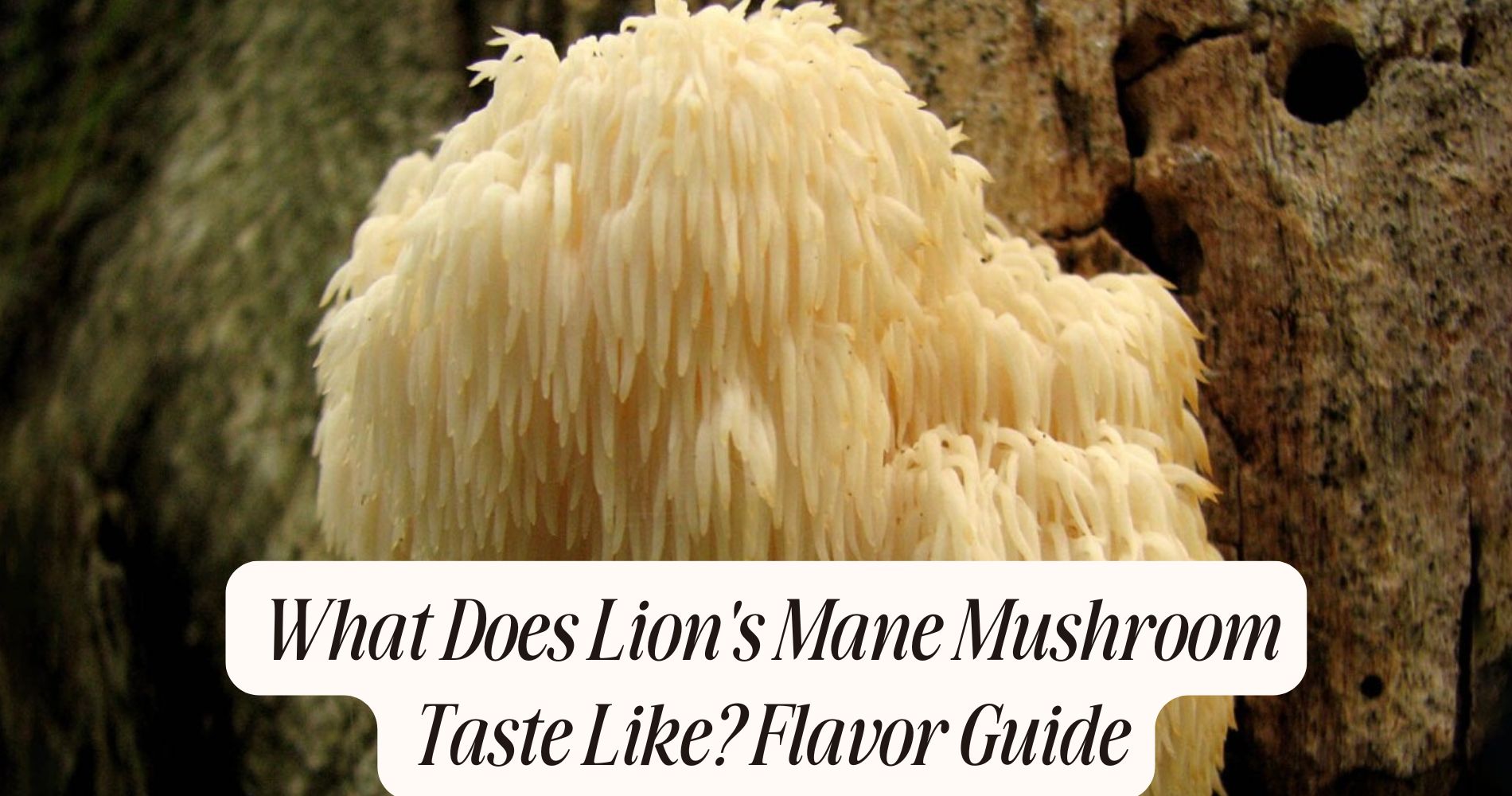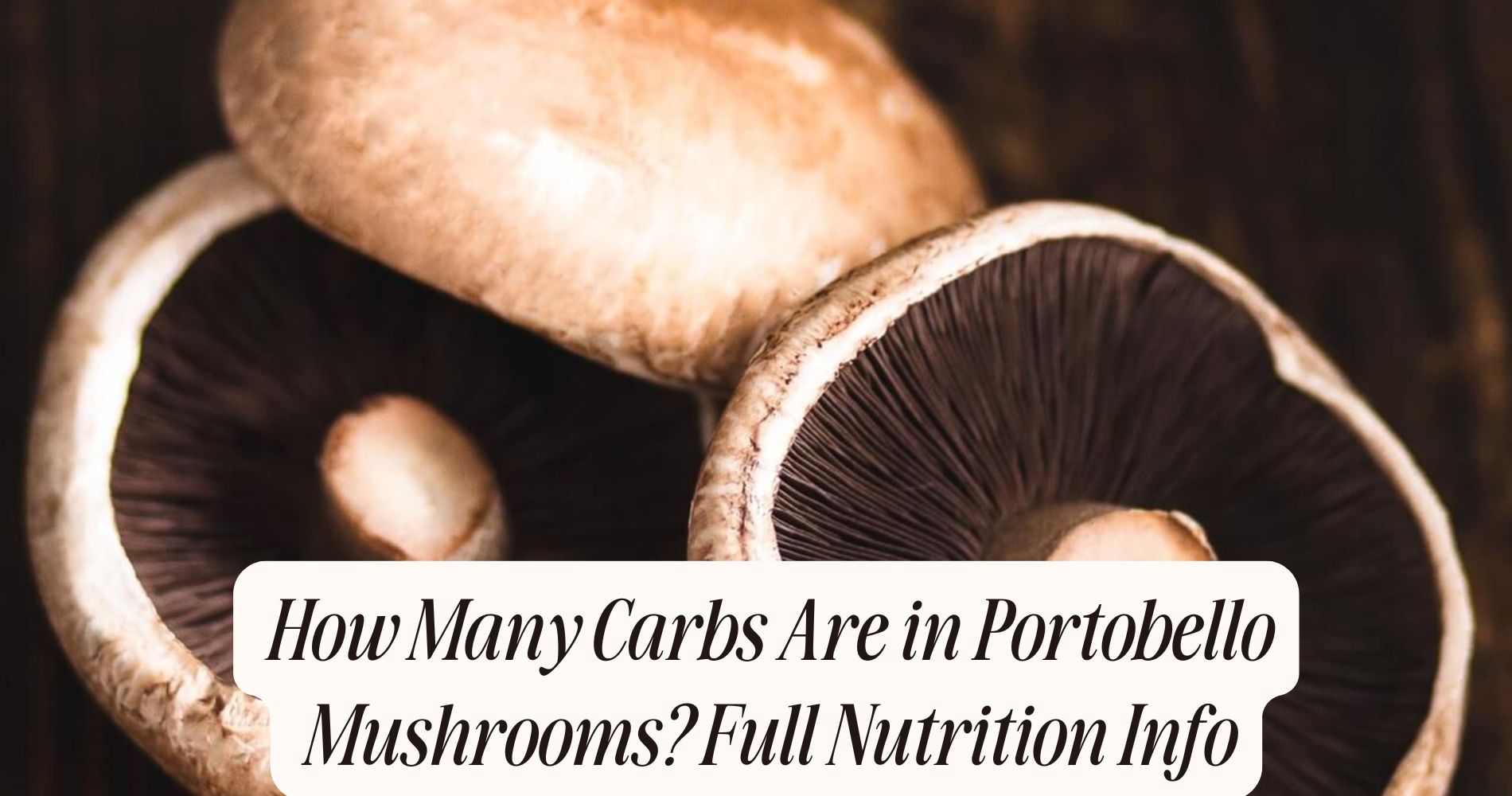
What Does Lion's Mane Mushroom Taste Like? Flavor Guide
What does lion's mane mushroom taste like? When you first encounter Lion's Mane Mushroom, its unique flavor profile might surprise you. It's rich and earthy, often compared to crab or lobster, with a hint of sweetness that elevates any dish. The velvety texture adds a delightful mouthfeel, making it a versatile choice in the kitchen. But how does it stack up against other mushrooms, and what are the best ways to prepare it? Let’s explore these aspects further.
Overview of Lion's Mane Mushroom
Lion's Mane mushroom, with its striking white, fluffy appearance resembling a lion's mane, captivates not just the eye but also the palate.
This fascinating fungus holds a rich cultural significance, particularly in Asian traditions where it's been revered for centuries.
You’ll discover that it’s not just a culinary delight but also a potent medicinal marvel. Research suggests Lion's Mane may support cognitive function, enhance memory, and even promote nerve regeneration.

Its bioactive compounds, like hericenones and erinacines, are believed to play an essential role in these benefits.
By incorporating Lion's Mane into your diet, you’re not only enjoying a unique ingredient but also tapping into a history steeped in health and wellness.
Embrace the journey of this remarkable mushroom!
Flavor Profile of Lion's Mane
With its unique texture and flavor, Lion's Mane mushroom offers a culinary experience unlike any other. When you take a bite, you’ll notice its rich, earthy taste, often compared to that of crab or lobster.
This intriguing flavor profile showcases flavor nuances that are both savory and slightly sweet, making it a versatile ingredient in various dishes. You might find taste comparisons to other mushrooms, but Lion's Mane stands out with its distinct, almost seafood-like essence.
It absorbs seasonings beautifully, enhancing your meals with depth. Whether sautéed, grilled, or added to soups, its flavor invites you to explore new culinary possibilities.
Texture Characteristics
The texture of Lion's Mane mushroom is one of its most enchanting features. When you bite into it, you'll notice its unique texture variations that set it apart from other mushrooms.
Its fibrous, velvety strands create a delightful mouthfeel experience, reminiscent of tender seafood or even pulled pork. You might find it slightly chewy, providing a satisfying resistance as you savor each bite.

The mushroom’s ability to absorb flavors enhances its texture, making it an excellent addition to various dishes. Whether sautéed, grilled, or added to soups, Lion's Mane retains its intriguing texture, elevating every meal.
This remarkable quality not only adds to its culinary appeal but also makes it a fascinating ingredient to explore in your kitchen.
How Lion's Mane Compares to Other Mushrooms
When you explore the world of mushrooms, you’ll find that Lion's Mane stands out not only for its unique texture but also for its distinct flavor profile.
Unlike the earthy and robust notes of shiitake or the delicate sweetness of enoki, Lion's Mane delivers a subtly savory experience, reminiscent of seafood or crab. In Lion's Mane comparisons, it often garners praise for its umami richness, making it a delightful addition to various dishes.
While most mushrooms offer earthy undertones, Lion's Mane distinguishes itself with a slightly fruity essence, appealing to adventurous palates.
Understanding these mushroom flavor profiles can enhance your culinary experience, inviting you to experiment beyond traditional varieties and embrace the unique character of Lion's Mane.
Culinary Uses and Preparation Methods
As you explore the culinary world of Lion's Mane mushrooms, you'll discover their versatility makes them a fantastic ingredient in various dishes. You can sauté them in olive oil or butter to bring out their rich, seafood-like flavor.
Roasting or grilling enhances their texture, creating a satisfying bite. Try incorporating them into pasta, risottos, or soups for a unique twist.
When it comes to cooking techniques, don’t hesitate to experiment—these mushrooms absorb flavors well, making them perfect for marinades or seasoning.
You can also blend them into sauces for delicious flavor enhancements. Their ability to complement both simple and complex dishes guarantees you'll find countless ways to enjoy Lion's Mane mushrooms in your culinary creations.
Pairing Lion's Mane With Other Ingredients
Although Lion's Mane mushrooms shine on their own, they also pair wonderfully with a variety of ingredients that enhance their unique flavor profile.
For a delightful dish, consider sautéing them with garlic and shallots, as their sweetness complements the earthy notes of the mushrooms. You might also try pairing Lion's Mane with fresh herbs like thyme or rosemary, which add aromatic depth.

Creamy sauces, like Alfredo or a rich butter sauce, elevate the dish further, creating a luxurious mouthfeel. Additionally, roasted vegetables such as asparagus or Brussels sprouts can provide a satisfying contrast.
These pairing suggestions highlight how Lion's Mane's texture and taste can harmonize with complementary flavors, making your culinary creations even more enjoyable.
Nutritional Benefits and Health Considerations
Whether you're looking to boost your diet or explore new health benefits, Lion's Mane mushrooms are a fantastic addition to your meals. Packed with impressive nutritional content, these mushrooms contain essential vitamins, minerals, and antioxidants that can support overall well-being.
You’ll find compounds like beta-glucans, which may enhance immune function, and hericenones that could foster brain health by promoting nerve growth. Regular consumption might improve cognitive function, reduce inflammation, and even support digestive health.
Plus, their unique flavor and texture make them a versatile ingredient for various dishes. Incorporating Lion's Mane into your diet not only tantalizes your taste buds but also provides a wealth of health benefits, making it a wise choice for anyone seeking a nutritious boost.
Popular Lion's Mane Mushroom Recipes
After discovering the impressive nutritional benefits of Lion's Mane mushrooms, it’s time to bring their unique flavor into your kitchen.
One delicious way to enjoy them is by making lion's mane risotto. Sauté the mushrooms until golden, then stir them into creamy Arborio rice, allowing the earthy taste to infuse every bite.
For a fun twist, try lion's mane tacos. Shred the mushrooms, sauté with spices, and pile them into warm tortillas. Top with fresh salsa and avocado for a delightful crunch.
Whether you’re crafting a comforting risotto or zesty tacos, Lion's Mane mushrooms bring a rich, savory depth that elevates any dish.
Experiment with these recipes to savor their incredible flavor!
Foraging and Buying Tips
When you're ready to explore the world of Lion's Mane mushrooms, knowing where to find them and how to choose the best ones is crucial.
These unique fungi thrive in hardwood forests, especially near decaying trees like oak, maple, and birch. Look for them during late summer to early fall; their fluffy, white spines make them easy to spot.

If foraging isn’t your style, various buying sources can provide fresh or dried Lion's Mane. Local farmers' markets, specialty grocery stores, and online retailers are great options.
When purchasing, inspect for firmness and a fresh, earthy aroma. Whether foraged or bought, verify you’re getting high-quality mushrooms to enjoy their unique flavor profile to the fullest!
Tips for Cooking Lion's Mane to Enhance Flavor
As you immerse yourself in cooking Lion's Mane mushrooms, remember that their unique texture and flavor can truly shine with the right techniques.
For ideal flavor enhancement, try sautéing them in butter or olive oil over medium heat. This method brings out their natural umami and creates a delightful golden crust. Adding garlic and herbs like thyme or rosemary can elevate the dish further, infusing it with aromatic depth.
You can also experiment with roasting; toss Lion's Mane with a bit of salt and pepper, then bake until crispy.
Don’t forget to avoid overcooking, as this can diminish their delicate flavor. With these cooking techniques, you’ll create a savory masterpiece that highlights the mushroom's extraordinary profile.
Try the Benefits, Skip the Cooking
Love the idea of lion’s mane but not a fan of the texture or prep? With Well Gummies’ SUPER MUSHROOM GUMMIES, you can enjoy the power of lion’s mane and 9 other functional mushrooms in a convenient, tasty gum chew form—no chopping or sautéing required. These vegan gummies deliver sharper focus, immune support, and calm energy with a delicious wild berry flavor that tastes like your favorite candy. No jitters, no crash—just brain-boosting benefits, anytime, anywhere.
Frequently Asked Questions
Can Lion's Mane Mushroom Be Eaten Raw?
You can eat lion's mane mushroom raw, but cooking enhances its nutritional benefits. While raw consumption offers some nutrients, sautéing or steaming it boosts flavor and digestibility, making it a delightful addition to your meals.
Where Can I Find Lion's Mane Mushrooms in the Wild?
You can find lion's mane mushrooms in deciduous forests, especially near oak and maple trees. Foraging tips include looking for its unique, cascading spines. Always prioritize proper mushroom identification to guarantee you're gathering safely.
Are There Any Allergic Reactions Associated With Lion's Mane?
You should be cautious, as allergy symptoms like itching or swelling may occur with lion's mane. Always prioritize mushroom safety—if you're unsure, consult a healthcare professional before trying any new mushroom varieties.
How Should Lion's Mane Be Stored for Freshness?
To keep your lion's mane fresh, store it in a paper bag in the fridge. Avoid plastic, as it traps moisture. Regularly check for any signs of spoilage and use freshness tips to extend its shelf life.
What Are the Differences Between Dried and Fresh Lion's Mane?
When you choose fresh lion's mane, you enjoy its vibrant texture and subtle sweetness, enhancing dishes beautifully. Dried lion's mane, however, offers a concentrated flavor, perfect for adding depth to soups and sauces.
Conclusion
To summarize, Lion's Mane Mushroom is a culinary gem, boasting a unique flavor and delightful texture that can elevate any dish. Its savory, slightly sweet taste, reminiscent of seafood, makes it a versatile ingredient in your kitchen. Whether you’re sautéing it to perfection or adding it to soups and pastas, this mushroom absorbs flavors beautifully. Embrace the rich experience of cooking with Lion's Mane, and let its nutty undertones transform your meals into something extraordinary.




